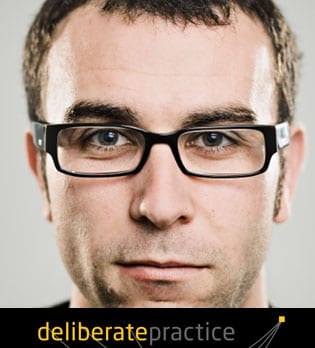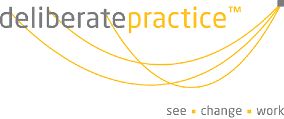Maintaining connection
Human connection has received lots of airtime since 2020, with the pandemic significantly reducing physical interactions. Because connection with people is an inherent aspect of human society, we’ve all had to be creative in maintaining our social connections and finding ways to ensure that physical distancing doesn’t mean withdrawing from society.
The value of ‘taking action together,’ connecting and bonding in different ways, has helped us make sense of our new world and find meaning. New ways emerged to maintain connections to our communities, interests, and values, recognising that we don’t live in isolation and that our interconnectedness with friends, loved ones, and communities has helped us hold it all together during a pandemic. This has inspired new community relations, connections, bonds, agile ways of working, and socialising. People began to seek out human connections through simple pleasures like a friendly drink across the fence with a neighbour they didn’t know. People organised dinners, games, and dress-ups over zoom with a cocktail and people from all corners of the earth. Team meetings were held over zoom, and connection sought on walks, where one might encounter another human being. These actions kept us connected.
In my professional role in Career Transition, I was often confronted by the double isolation experienced by people also dealing with job loss. If, as humans, we seek out and lean on human interaction (particularly when we are experiencing the stress of life’s challenges), just imagine the compounding effects of isolation, when you throw job loss into a pandemic, when physical interaction has been replaced by social distancing. We know that networking is as important to one’s job search as their resume. Still, with traditional networking avenues like lunches or coffee meetings out of reach, connecting prospects were scarce and impersonal. This led to heightened levels of hesitation to reach out. For many, this meant withdrawing further, and we all know the impact of that withdrawal on mental health, wellbeing, and finding work.
Networking hesitation is natural
There’s often a lot of reluctance with networking. Many describe networking as really stepping outside of their comfort zone, unpleasant and something that provokes a lot of fear. It comes naturally for some, while others would rather wait in line at the post office for 4 hours. Some of us just don’t like doing it, yet if you think about it, all it really is, is making connections.
Connecting with others is about, meeting people, forging relationships, and showing them that you’re someone worth knowing as you display your curiosity, interest, ideas, knowledge, and much more. No doubt some of us find it easier to connect with others, especially people we don’t know, but by exploring the world around us with others, you may just see things you have never seen before.
Sit at the steering wheel of your own life
I like to think of connecting with others as merely a strategy to move away from doing things like ‘career transition and job search’ alone and moving towards doing it with others. It’s unlikely you will find your ideal job by looking for it, but you may likely find it by looking for people, kind of like if I open up myself to the world, the world will open itself up to me. Yes, there will be rejection, and rejection can be painful, but it can also be delicious and useful. It’s important to get beyond the crippling monster of rejection and see it as a number only.
It’s important to get into the driver’s seat, sit at the steering wheel of your own life, and not just wait for a job to pop up in your job board notifications. The experience of scrolling through job ads can be stressful and exhausting; it can create dents in your confidence as you can start to focus on what you don’t have to meet the specifications, rather than what you do have. You can start to feel failure like you’re doing something wrong by not having all the experience and the right qualifications. This may lead you to question whether you’ve taken the wrong turn somewhere in your past and that there is no way to get on the right path again. This can be in stark contrast to the often fulfilling and validating experience of connecting with others.
Exercise your Bold Muscle
Imagine then, what it would look like if you started to ask for what you want, not just what you think you can get, to begin to say, this is what I want, and this is what I need. This may feel uncomfortable at first, but the fruits of boldness pay dividends. Unless you tell people what you want, you are not giving them a chance to respond. Asking can give you a wave of confidence to take you further in your actions. Connecting with others, particularly strangers, can push the boundaries of your comfort zone, but with repeated practice, it becomes natural and useful. You can’t get fit by watching other people work out; in other words, seek the sweat. As they say, practice makes perfect. Practice being bold about something playful if that helps build the muscle for career networking.
Look for people, not jobs!
New connections can accelerate your career transition, offer a different perspective and help you move away from self-doubt and negative spiralling. It’s important to give people the chance to rally around you and be your support crew. Connecting may be initially challenging, but it is rewarding and will bring in people who can open doors – a community of people who can inspire you. New connections can turn into something special further down the line and can yield even more people to connect with. They will often open opportunities because of the proactivity, enthusiasm, and curiosity you project. So, ask for a conversation; what’s the worst thing that can happen?
Principles to follow when networking
Here are a few thoughts from an experienced Career Strategist and Outplacement Specialist, about some of the principles to follow when having conversations:
- Aim to make the meeting a conversation about someone else’s career, their field, sector, trends, insights. You learn; they share.
- Lead with curiosity, make the questions all about them. This is best done in real-time, in person, or over the phone. They are an effective way to find out real-world information about roles, ways of working in a detailed way. They lead you to valuable insights about what is out there, what’s happening, what resonates with you.
- Help them understand how it is that they can help you in your endeavours. Don’t ask for a job.
- Ask who they’d recommend you speak to, based on what they’ve learned about your needs.
- Follow up with them to keep them in the loop to show you valued their suggestions.
- Have as many conversations as you can to multiply your chances of further opportunities and new connections.
- Start with people you know well – (friends, family, work connections). Their connections are the next layer out of your social circle who would receive your request well. You know of them or know someone in common – a rich scene to mine. They also have connections – a big playing field.
It may surprise you to know you already have many people you can access with a little bit of effort. Most people I know, including those I have met through career coaching, have shifted jobs or careers through their networks. While they may be helping you, you may also be a rich source of help for them. You don’t need to be out of a job to connect. If you don’t think you need to connect, maybe you know someone who does. Imagine the power for them in you reaching out to offer your help as an informal career consultant! There are degrees of isolation we all experience at different times, so play your part in proactively connecting with others, and endeavour to receive connection requests with curiosity and a desire to help people looking for people.
Happy Connecting.



